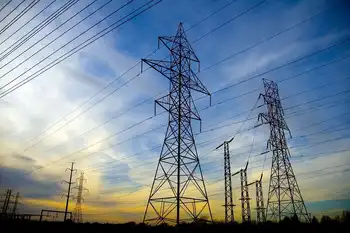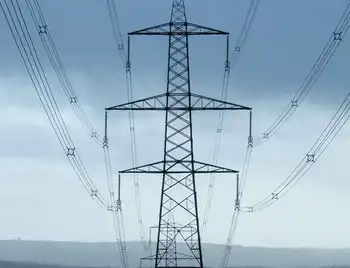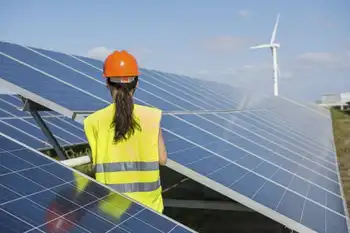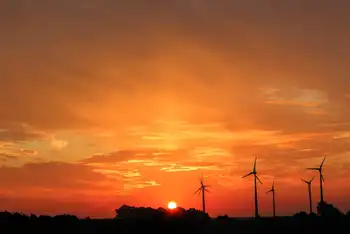Man wants to revive Whitefish hydropower plant
By Flathead Beacon
NFPA 70b Training - Electrical Maintenance
Our customized live online or in‑person group training can be delivered to your staff at your location.

- Live Online
- 12 hours Instructor-led
- Group Training Available
Right now it's a turbine of mystery, but it may soon buzz with electricity again.
Jeff Arcel of Mother's Power Inc. wants to bring back to life a hydropower plant located just north of Whitefish near the city's water treatment plant. It appears city officials are on board too. But of course, these things all come down to money and any effort to retool the plant must first be approved through the city's budgetary process, which is under way.
The city council already gave initial approval to set aside $535,000 in the water fund budget to replace the dilapidated system and cover contingency costs such as design and negotiations. The rest of the plant's infrastructure, estimated to be worth at least $2 million, is in good shape. Arcel believes it's a golden opportunity for the city to capitalize on a valuable resource the infrastructure is there and so are the proper permits. In addition, the city has hired a firm to sort out its water rights.
"If we were doing this today, it would be a $2.5 million project," Arcel said.
Arcel was commissioned by the city to research the plant and author a report. Along the way, he ran into a series of challenges and outright surprises. Such is the case when few people know anything about a project and only minimal records are available.
"It's amazing that there's no paperwork anywhere," Arcel said.
According to Arcel's research, in 1982 a group of engineers approached officials in Whitefish and a handful of other Montana towns with the idea of building hydroelectric plants in their communities as a source for renewable and locally produced energy. By 1984, the group, using the name Hydro Management Inc., had built three plants: one in Whitefish and two in the Philipsburg area. The Philipsburg facilities are still in operation.
The city of Whitefish apparently entered into an agreement with Hydro Management and Pacific Power and Light, the county's electric utility company at the time. But no records exist regarding that agreement. The absence of records can be attributed to the fact Whitefish wasn't yet keeping digital files and Hydro Management filed for bankruptcy in 1989. Also, Pacific Power and Light withdrew from the Flathead market around that same time.
Then a lightning storm in 1989 or 1990 caused the system to fall into disrepair and the facility has sat dormant since. Further complicating Arcel's efforts to obtain records is the 2006 death of W.H. Edelman, the lead engineer for Hydro Management.
If the city moves forward with reviving the plant, Arcel said it has the potential to power up to 200 homes per year. As important as it is in sheer volume of electricity, it would also help push Whitefish to the forefront of the municipal renewable energy movement in the state. Montana is the fifth highest hydropower producer in the nation, behind the three Pacific Coast states and New York, according to Arcel's report.
Then, of course, there's the practical value for the city — the hydro plant will make money. The city racks up a substantial annual power bill, running facilities like the water treatment plant and keeping streetlights lit. Public Works Director John Wilson told councilors that the city could pay off a percentage of that bill with revenue from the hydro plant. Arcel believes the city stands to make $75,000 to $200,000 per year. Before it shut down, records indicate the city was making $50,000 per year.
Repairing the existing system could cost anywhere between $16,000 and $165,000, Arcel said. But it would still be outdated, even with improvements. Arcel makes the analogy of a crashed plane: "You could fix it and fly it out, but would you really want to fly it and for how long?" A new system would pay for itself in five to 10 years, he said. Water flow studies have already begun at the plant.
Furthermore, a reconstructed turbine would require constant maintenance and attention, which was one of the main reasons it fell into disrepair in the first place. Or as Arcel's report states, the primary cause was "repeated breakdowns with no adequate technical or operational support." The new system, however, would incorporate sophisticated technology with remote diagnostics, thus allowing city staff to monitor the plant without actually having to be there at all times.
"They'll have the ability have a digital presence," Arcel said.
The city is looking into outside funding and grant options. Also, Flathead Electric Cooperative has indicated it would be interested in a power-purchase agreement. If given the final green light by city council, Arcel hopes to have the system running by next year.
"The reality is Whitefish has great hydro potential," Arcel said.











